Determining Research Impact : Understanding the Influence of Lead Authorship in Original Articles
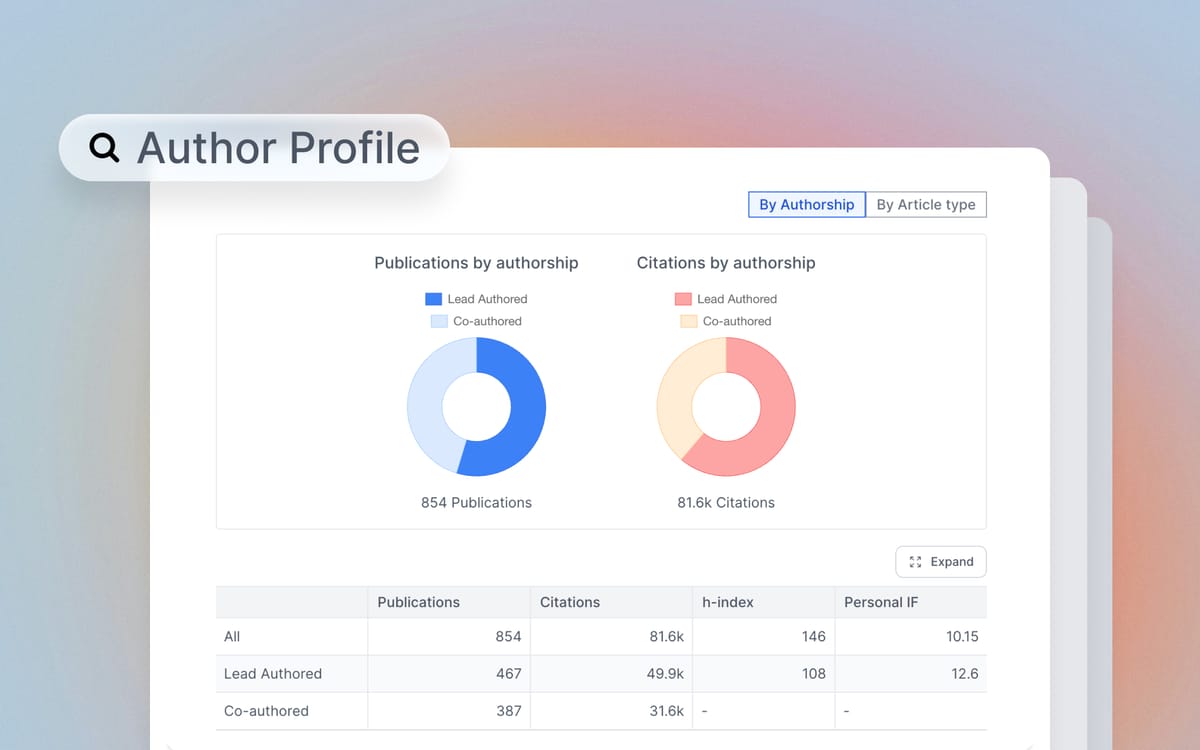
Lead Authorship: A New Standard for Academic Influence
Since the role of a lead author represents how substantially the researcher has contributed to the research, it serves as an important indicator of the researcher's influence in the field. Therefore, it is essential to understand the importance of the lead author in research papers. Not only does it indicate the influence of the research, but also clarifies the reliability and responsibility of the research results, identifies the network of the author and co-authors, and highlights the literature that contributed to the research.
Scinapse has introduced an innovative approach to evaluating scholarly work, allowing users to discern not just the quantitative but the qualitative impact of a researcher’s contributions.
Beyond the Numbers: Assessing Authorship
The new feature, showcased on each author profile, is a dual graph system that delineates the author’s publications and citations by authorship. The visual breakdown between ‘Lead Authored’ and ‘Co-authored’ work is more than a mere statistic; it is a narrative of the researcher’s direct influence on the scientific community.
Lead Authorship as a Quality Indicator
The ‘Lead Authored’ segment of the graph reveals the proportion of research where the scholar was the driving force. It’s an important distinction, as lead authorship is often associated with principal responsibility and intellectual ownership. This is contrasted with ‘Co-authored’ works, which, while significant, may not always reflect a high degree of personal contribution from the researcher.
Originality Versus Review: A Delicate Balance
Scinapse’s profile also distinguishes between ‘Original’ and ‘Review’ papers. An ‘Original’ paper implies a unique hypothesis and primary research, often resulting in higher academic value. On the other hand, ‘Review’ papers, though typically garnering more citations, may not contribute new research but rather synthesize existing literature.
The Implications of a Research Profile
A quick glance at the provided screenshot from Scinapse’s platform illustrates an example of these insightful metrics in action. With 854 publications to their name, a researcher shows strong lead authorship in 467 of those works, accumulating 49.9K citations from their lead-authored papers, hinting at a robust role in their field’s advancement. Furthermore, with 430 original papers, their contribution to new knowledge is evident, far surpassing the mere 49 review papers, which suggests a substantial and genuine scholarly impact.
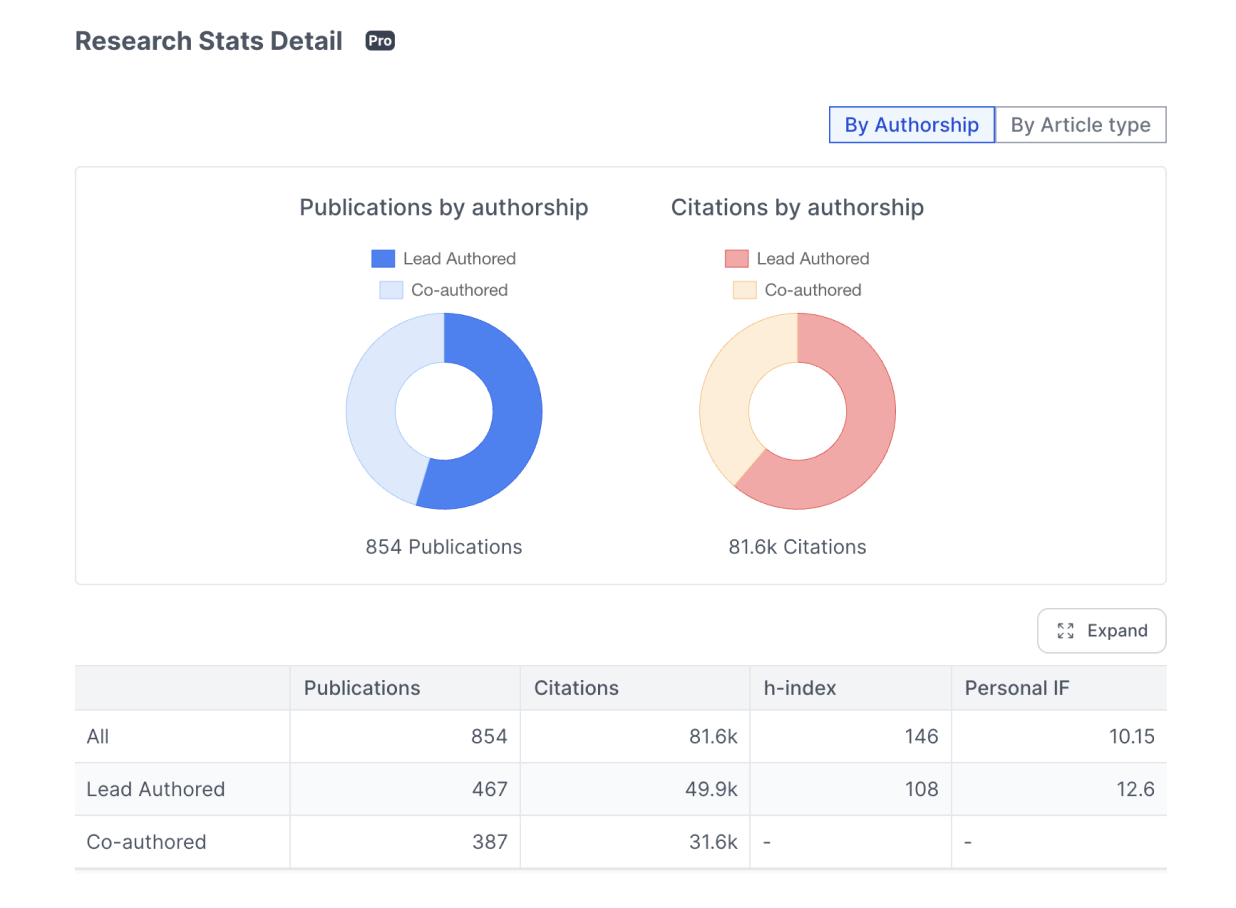
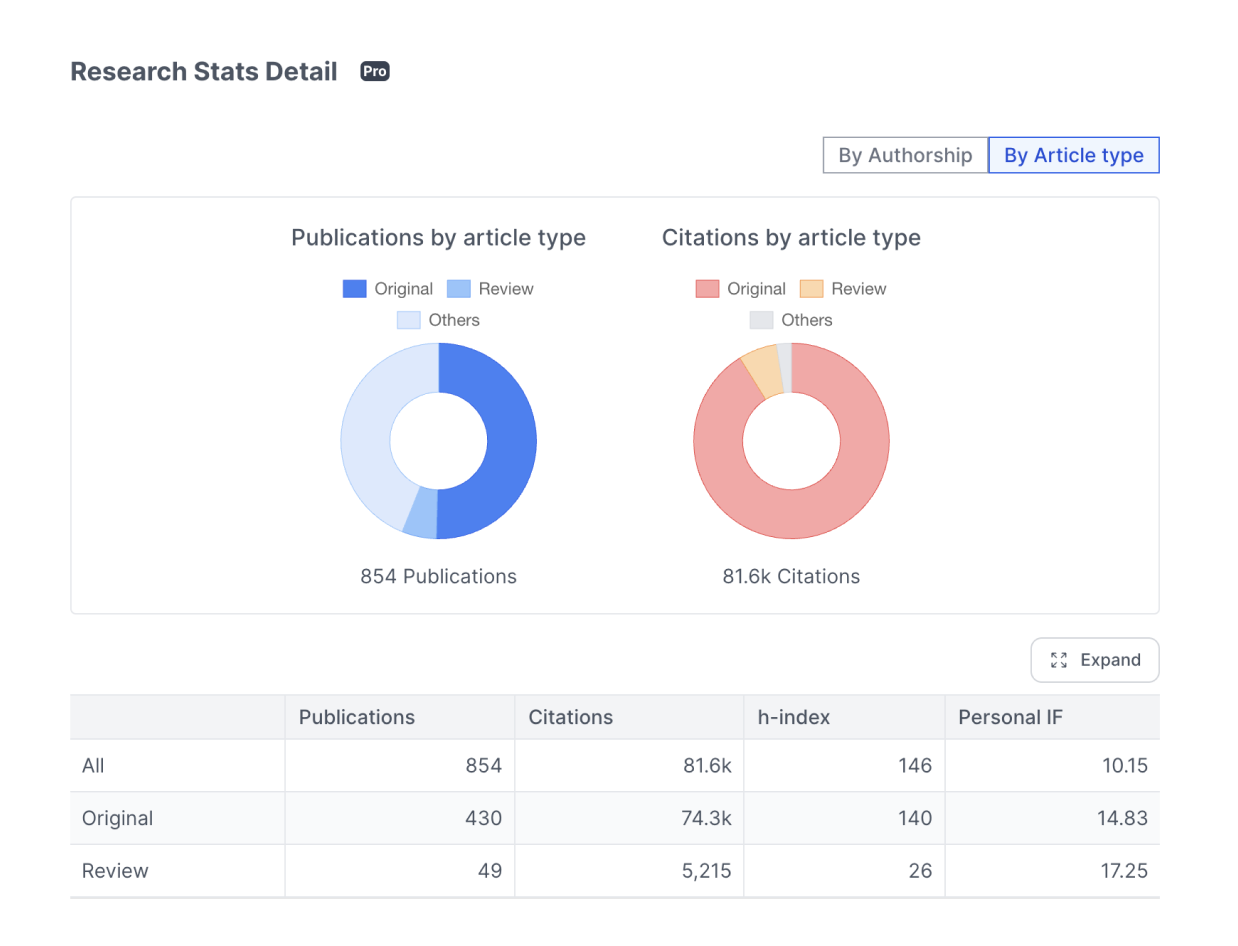
Decoding the Stats for Strategic Collaboration
For those seeking to collaborate or build upon existing research, these graphs offer a strategic advantage. A high proportion of lead-authored and original papers could signify a researcher’s pioneering role in their discipline, making them an ideal candidate for high-level research initiatives or partnerships.
Scinapse new feature provides a valuable lens through which the academic world can be viewed. It goes beyond the surface to highlight the essence of a researcher’s work, setting a new standard for measuring academic excellence and influence.
written by Sarah Little
Never re-search again.
Scinapse is made by researchers for researchers.
Join the next generation of research at ⏯️ https://scinapse.io/
Pluto Labs
Pluto Labs helps researchers focus on their research by improving several inefficiencies in the academic research process. We offer data-driven insights from academic papers, allowing users to easily obtain review-level results for their desired range of papers.
https://pluto.im/


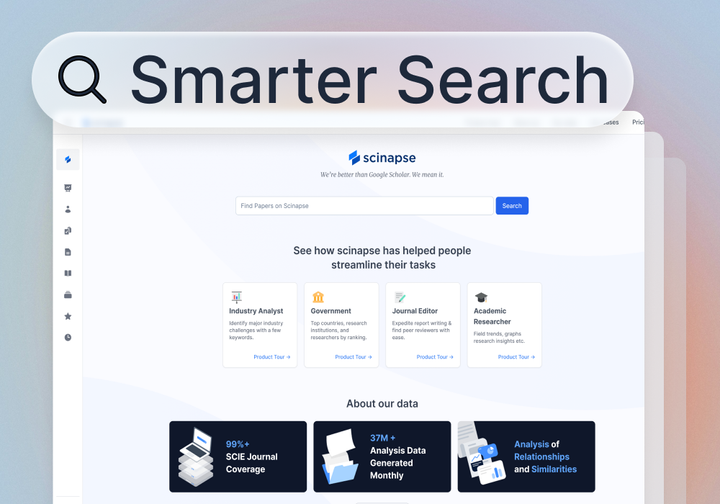

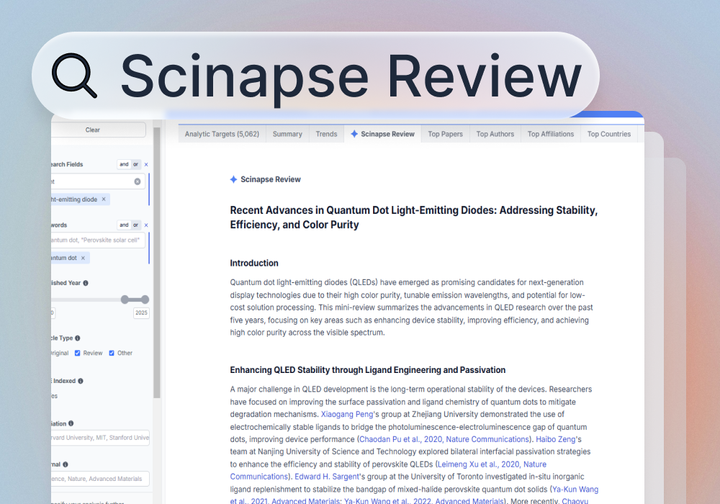
Comments ()